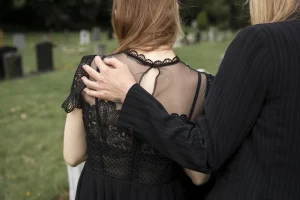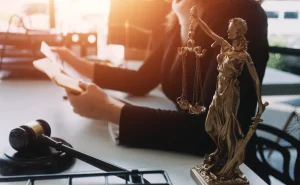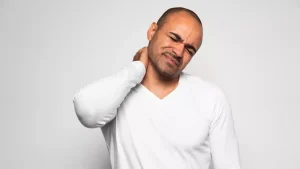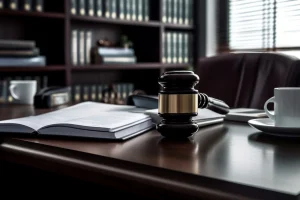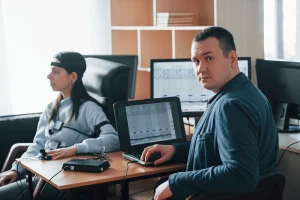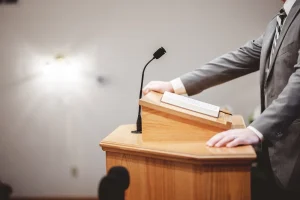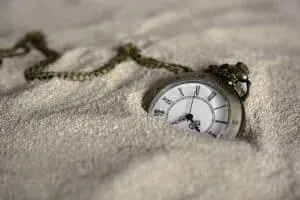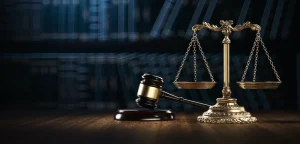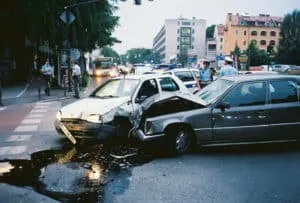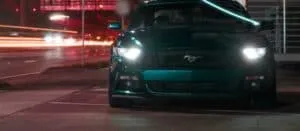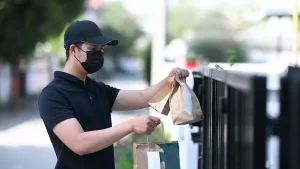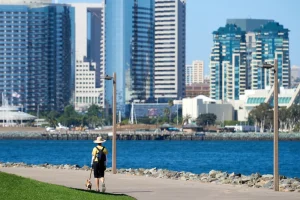Each victim of a multi-vehicle accident typically suffers physical injuries and substantial property damage that can translate into many thousands of dollars. If someone is killed in these incidents, the deceased’s surviving family can file a wrongful death claim against the other party.
Since these accidents involve multiple vehicles, it can be challenging to determine who is responsible for the collision. Here, we’ll explain what a chain reaction pileup is, who is at fault in a multi-car collision, and other factors to keep in mind.
What is Chain Reaction Pileup?
The involvement of three or more cars in an accident is known as a chain reaction pileup. When two vehicles collide, the first collision is likely to lead to another crash, which in turn may lead to another crash.
For instance, if car A is stopped instantly at the red light and Card D is at the back of the line, the following scenario occurs:
Car D can collide with car C, which can bump into car B. As a result, car B can hit car A.
Similarly, a driver texting on their phone causes a car to slam into the back of another vehicle, causing both cars to get damaged. When Car C gets too close to Car B, it rams into Car B’s back, causing Car B to smash into Car A.
Chain-reaction pileups can be far more complicated than depicted here. These multi-vehicle accidents can be caused by various factors, including driver error, road conditions, hazards, and many more.
Many multi-car accidents occur on major highways when the vehicles are being driven at high speeds. Moreover, hundreds of cars could be involved in a rear-end collision due to poor visibility, leading to fatalities. Because several vehicles are simultaneously involved in such incidents, they pose a significant threat to everyone involved.
How Does a Multi-Vehicle Crash Occur?
When two or more vehicles collide, almost every person present in the car gets either injured or killed. Often times these accidents are caused by a driver rear-ending another vehicle or multiple vehicles. The force of the first collision may abruptly end, causing the car in front to collide with the back end of the other vehicle.
Multi-vehicle accidents can also occur when there are too many cars traveling too close together. The collision is unavoidable if the drivers are driving at high speed. The first two cars involved may be responsible for the rest of the damage. Still, for the third and further vehicles, the first driver is usually responsible for the injuries and property damage.
Determining Which Party is At Fault?
Which driver is at fault when there are multiple vehicles involved in an accident? Multiple-car rear-end collisions are difficult to prove. By using evidence, you can show that the negligent driver caused the accident, which will help you win your case.
However, it is not that easy. Are people who rear-end other people always to blame? Not always. When an accident similar to this occurs, there are several things to keep in mind. If you are dealing with multiple car accident claims, these considerations are even more critical. Before assigning blame and distributing compensation, the lawyers and insurance adjusters must consider all relevant factors.
Let’s take a look at an example. If the driver of car D were texting at the time of the collision, car D would likely blame them for the accident. This scenario may simplify things too much. There is still a chance that other cars in the chain could be held partially responsible. If the drivers of the other vehicles are found to have been negligent in preventing the accident, the fault can fall on their heads.
In many states, the jury will consider all relevant facts and evidence before assigning each person’s share of the blame for the accident. Then, some of the defendants may argue that the plaintiff bears the burden of the accident. If such a situation arises, the deciding jury reassesses and assigns a portion of the blame to the plaintiff.
Things to Keep in Mind
To help you get started, here are some things to keep in mind:
- The investigating party needs to look at the condition of the road. Was it covered in snow? Was it foggy?
- The investigating party needs to examine the position of the vehicles at the time of the collision. You should analyze damages, debris, or any other data.
- The investigating party needs to crosscheck the stories of all the eyewitnesses against one another. Passengers in the vehicles involved in the accident can be eyewitnesses.
According to investigators, anyone found driving under the influence of alcohol, drugs, or excessive speed will be held responsible for the accident. Moreover, suppose a construction crew was on the job and didn’t have adequate signage. In that case, the construction company could be partially responsible for the accident.
Liability
As a general rule, subsequent drivers are blamed for the chain reaction leading to a pileup. However, in some cases, the first driver’s negligence is to blame. It would help if you considered several factors to determine who is to blame for the accident. When you approach a lawyer with your case, they might hire an expert witness to examine these factors and determine who has primary liability. However, even with the help of an expert, a multi-vehicle accident can still be a time-consuming task, not to mention a costly one.
Evidence is required to establish liability in multiple vehicle rear-end collisions. The following are examples of proof:
- A security camera’s video
- Evidence such as skid marks or debris found on the accident scene
- An eyewitness
A lawyer determines who is at fault by gathering and analyzing all relevant pieces of evidence and facts. If the case goes to trial, the jury will consider all the evidence and determine who is to blame.
Evidence
Typically, multiple car accidents yield evidence that you can use against the other driver. If no dash cams are present, you need to look into further details. Traffic cameras are of great help in this regard. After the accident, the lawyers might need to look into the location. They need to check if the accident occurred within the range of traffic cameras. To prove their case, a lawyer will need evidence such as photos of the accident scene, information about the weather, and whether or not any of the involved vehicles had defects. The lawyer can then decide how to proceed once it is clear who is responsible.
The Chain Reaction Error
Because of a chain reaction, it’s essential to know who’ll be held responsible for the multiple car pileup. The case becomes easier if there is a party that admits responsibility. However, suppose no one claims responsibility for causing the chain reaction of collisions. In that case, any expert will need to examine all possible factors and determine who could have started it. Distracted driving could remove most of the blame from other drivers if the first car were at fault. There is a good chance that the court will blame most drivers for colliding into the car in front.
The Need for Medical Care
When a car accident injures more than one person, the top priority is getting medical attention. You will need immediate assistance to get out of the car or make sure that bleeding wounds are treated first. These incidents can result in death or severe injury. Therefore, someone who isn’t hurt needs to immediately call the ambulance and get medical assistance, especially if the injury is fatal. Then, it is crucial to determine which evidence is necessary for a possible claim once these experts arrive.
Lawyers for Victims of a Multi-Car Crash
It’s time to hire a lawyer to pursue the claim once everyone has dealt with each issue at hand. For the courts to assign a percentage of blame, they will need evidence and an algorithm. To obtain compensation, the lawyer must make their case to the judge or jury.
A multi-vehicle collision can be a catastrophic event. To begin with, there was an accident. There was a commotion. The accident involved physical and financial damage. Secondly, your car and the other cars in the chain can be severely damaged. Depending on the circumstances, nearby property may also be affected by accident.
Moreover, mayhem on the streets causes traffic delays, which can result in severe multiple car accidents. There can be resulting injuries. Personal severe injuries may result from a multi-car collision, depending on the severity of the crash.
The entire can be very hectic. Therefore, you need an efficient lawyer that can help you in this regard. The personal injury attorneys at Phoong Law are here to help you if you’ve been involved in a multi-car accident and have sustained any injury. To maximize your chances of triumph and legalize your insurance claim settlement, our legal experts will guide you through the entire process.
FAQs
-
How many accidents does the average driver have?
According to sources, an average person experiences three to four accidents in their typically long driving lifetime.
-
Who is at fault in a multi-vehicle accident?
No matter how many cars were involved, the last vehicle is almost always at fault in a multiple-car accident. Terrible multiple-vehicle accidents happen when one driver rear-ends another and pushes that driver into a chain reaction.
-
Does every driver get into an accident?
Collision claims are estimated to occur once every 17.9 years on average. This means that an average driver gets into an accident at least three to four times during their life.
-
Which drivers cause the most accidents?
According to the Insurance Institute for Highway Safety (IIHS), drivers ages 16-19 are three times more likely to crash than drivers over 20.
-
What are the odds of being involved in a car accident?
According to Driver Knowledge, in the United States of America, around six million accidents tend to happen every year.
-
What are the odds of getting in a car crash?
According to the National Safety Council (NSC), in the United States of America, the odds of getting into a car crash are one in 107.
- What are the chances of being involved in an auto collision during your lifetime?
According to a survey, 77% of drivers have been involved in an accident. It’s also common knowledge that most people will have three to four car accidents in their lifetime.
-
Who is liable in a three-car accident?
In a three-car collision, all three drivers can be held responsible. Cars were involved in a multiple-vehicle crash because of a single driver’s error. The driver who started the three-way collision will bear the heaviest responsibility for the accident’s outcome.
-
Who is at fault in a pileup?
When two drivers come to a head-on collision, the driver who crosses the other’s lane is usually blamed.
-
How is fault determined in a multi-vehicle accident?
Finding out who was at fault in a multi-car accident usually boils down to figuring out who was driving carelessly first. However, strong evidence is required to ensure that the real culprit is held accountable. Once the investigating team has all the facts, they can determine who was at fault.





